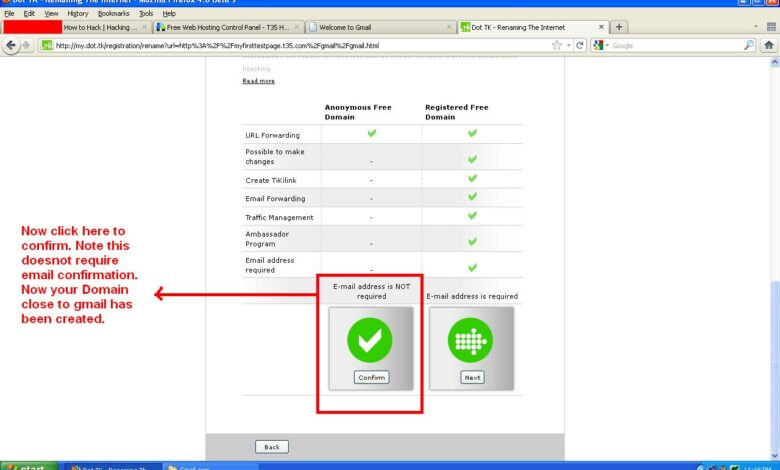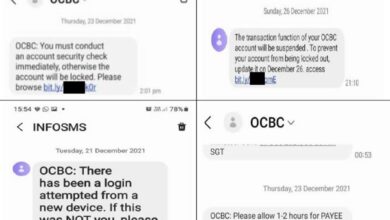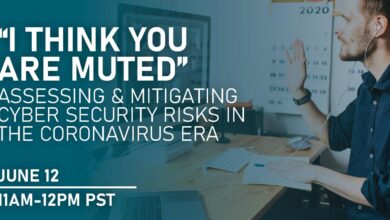
Gmail Hacks Cyber Attacks Explained
Hackers launch cyber attacks on gmail accounts, targeting individuals and organizations for various reasons. These attacks often involve sophisticated methods, like phishing and malware, exploiting vulnerabilities in Gmail’s security. Understanding the motivations behind these attacks, the techniques employed, and the impact on victims is crucial for developing effective preventative measures.
The motivations behind these attacks can range from financial gain to political disruption, with each type of attacker having their own unique goals. This article delves into the different types of hackers, their motivations, and the impact on both individuals and businesses. We’ll also explore the methods and techniques used in these attacks, and finally, discuss preventive measures and emerging threats.
Motivations Behind Attacks

The digital landscape is rife with cyberattacks, targeting everything from personal accounts to massive corporations. Understanding the motivations behind these attacks is crucial for developing effective defense strategies. This exploration delves into the complex reasons driving hackers, examining the different types of attackers, and highlighting the potential impacts on victims.Hackers are motivated by a diverse range of factors, from financial gain to the pursuit of power and recognition.
These motivations vary greatly depending on the individual or group behind the attack, influencing the methods and targets employed. Understanding these motivations is paramount for mitigating future attacks and safeguarding against various threats.
Types of Hackers and Their Motivations
Different types of hackers have different motivations. Organized crime groups, for example, are often driven by financial gain, using sophisticated methods to steal data or extort money. Individual hackers, on the other hand, might be motivated by a desire to prove their skills, disrupt systems, or even express political views. These motivations shape the nature of the attack and its impact on the target.
For instance, a hacker seeking notoriety might focus on a high-profile target to gain attention, while an organized crime group might prioritize stealth and efficiency to maximize their financial gains.
Motivations and Their Impacts
The motivations behind cyberattacks have significant consequences for both individuals and organizations. A hacker motivated by financial gain might use ransomware to encrypt sensitive data, demanding payment for its release. This can lead to substantial financial losses for the victim and disrupt critical operations. Data theft, driven by the desire to access confidential information, can compromise sensitive data, leading to identity theft, reputational damage, and potential financial loss.
The impacts can be far-reaching, impacting not just the targeted individuals but also the broader community.
Role of Political Motivations
Political motivations play a crucial role in some cyberattacks. State-sponsored hacking groups may target political opponents, government agencies, or critical infrastructure to disrupt operations or influence public opinion. These attacks often aim to undermine political stability or achieve strategic objectives. This can have significant repercussions, impacting not only the targeted government but also international relations and global security.
Recent news about hackers targeting Gmail accounts highlights a critical need for enhanced security measures. Protecting user data is paramount, and the increasing sophistication of cyberattacks demands proactive solutions like deploying AI Code Safety Goggles Needed Deploying AI Code Safety Goggles Needed. These tools can help identify vulnerabilities in code, reducing the risk of future attacks on platforms like Gmail.
Ultimately, a more secure digital ecosystem is essential to combat the growing threat of hackers.
Comparison of Motivations
| Motivation | Goal | Potential Consequence | Example |
|---|---|---|---|
| Financial Gain | Money | Loss of funds, identity theft | Ransomware attacks targeting financial institutions |
| Data Theft | Sensitive data | Damage to reputation, financial loss | Hacking into corporate databases to steal intellectual property |
| Disruption | System overload or malfunction | Operational downtime, loss of service | Denial-of-service attacks targeting websites |
| Political Motivation | Influence or disruption | Damage to reputation, instability | State-sponsored hacking of political opponents |
Importance of Understanding Motivations
Understanding the motivations behind cyberattacks is essential for developing effective prevention strategies. By analyzing the goals and potential consequences of different motivations, organizations can better prepare for and mitigate risks. This knowledge allows for targeted security measures and a proactive approach to cybersecurity, ultimately safeguarding against future threats.
Methods and Techniques Used
Gmail account breaches are often a sophisticated interplay of technical vulnerabilities and human factors. Hackers meticulously craft attacks, leveraging a combination of social engineering, malware, and exploits to gain unauthorized access. Understanding these methods is crucial for bolstering Gmail security and mitigating the risk of compromise.
Common Attack Methods, Hackers launch cyber attacks on gmail accounts
Gmail accounts are targeted through a variety of attack vectors, each with its own set of techniques. Phishing, malware infections, and credential stuffing are prevalent methods, often combined in increasingly complex schemes.
- Phishing scams are deceptive emails designed to trick users into revealing sensitive information, such as passwords and account details. These emails often mimic legitimate communications, leveraging brand recognition and urgency to manipulate victims. A successful phishing campaign relies on social engineering tactics to exploit the victim’s psychological vulnerabilities. For instance, a phishing email might impersonate a bank, requesting account updates to prevent closure, creating a sense of urgency and fear.
- Malware infections involve malicious software disguised as legitimate applications. These programs can be downloaded through malicious links, infected attachments, or compromised websites. Once installed, malware can steal login credentials, monitor user activity, or grant hackers remote access to the victim’s account. Malware can be deployed through various methods, from malicious advertisements to infected software downloads.
- Credential stuffing is an automated attack that uses previously compromised login credentials from other platforms to try and access Gmail accounts. Attackers often collect lists of compromised usernames and passwords from various data breaches and use automated scripts to test these credentials on other websites, including Gmail. This method relies on the reuse of passwords by users across different online accounts.
Social Engineering Tactics
Social engineering is a crucial component in many Gmail account compromise attempts. Hackers exploit human psychology to manipulate victims into divulging sensitive information or performing actions that compromise their security. This manipulation can take many forms, from creating a sense of urgency to exploiting trust and authority.
- Pretexting is a common social engineering tactic where attackers create a fabricated scenario to gain access to information. For example, an attacker might pose as a technical support representative, requesting login credentials to “fix” a problem.
- Baiting involves enticing victims with something of value to lure them into revealing information or downloading malicious software. This might include a fake prize or a download link for a software update.
- Quid pro quo is a tactic where an attacker offers something in exchange for information. For example, an attacker might offer a discount on a product in exchange for the user’s Gmail password.
Types of Malware
Various types of malware are employed in Gmail account attacks. The selection depends on the attacker’s goals and the target environment.
- Keyloggers record every keystroke made by the victim, capturing passwords and other sensitive data. These programs can be embedded in seemingly harmless applications or browser extensions.
- Trojan horses are disguised as legitimate software but contain malicious code. They can provide hackers with remote access to the victim’s system, enabling them to steal data or control the device.
- Ransomware encrypts the victim’s data and demands payment for its release. Gmail accounts can be compromised to spread ransomware, either directly or as part of a larger attack chain.
Evolving Methods and Techniques
Cybercriminals constantly adapt their methods to stay ahead of security measures. New techniques emerge, combining existing methods in novel ways. Sophisticated attacks frequently involve the combination of multiple methods, making detection and prevention more challenging.
Attack Vectors
| Attack Vector | Description | Example |
|---|---|---|
| Phishing | Deceptive emails designed to trick users into revealing sensitive information. | Spoofing a legitimate sender (e.g., a bank or email provider). |
| Malware | Malicious software designed to compromise a system. | Trojan horse disguised as a legitimate application. |
| Brute Force | Repeated login attempts using automated tools. | Dictionary attacks using common passwords. |
Gmail Security Vulnerabilities
Hackers exploit vulnerabilities in Gmail’s security systems, including weak password policies, insufficient multi-factor authentication (MFA) implementation, and insecure APIs. They often leverage these weaknesses to bypass security measures and gain access to accounts.
Impact on Victims and Organizations: Hackers Launch Cyber Attacks On Gmail Accounts
Gmail account compromises, while seemingly a digital inconvenience, can have devastating real-world consequences for both individuals and businesses. The emotional distress, financial burdens, and reputational damage can be profound. Understanding the full scope of these impacts is crucial for developing effective preventative measures.Compromised Gmail accounts open doors to a range of vulnerabilities, exposing sensitive information and jeopardizing the integrity of personal and organizational systems.
The potential ramifications for victims and organizations are far-reaching and often severe.
Consequences for Individuals
The emotional impact of a compromised Gmail account can be substantial. Victims often experience feelings of violation, anxiety, and distrust. The fear of identity theft, financial fraud, and the potential for further malicious activity can significantly impact their mental well-being. Furthermore, the recovery process, which often involves changing passwords, monitoring accounts, and potentially filing fraud reports, can be time-consuming and stressful.
This can have a ripple effect on daily life and work.Financial repercussions are another significant concern. Victims may face substantial financial losses due to unauthorized access to bank accounts, credit card details, or other financial instruments. Scams targeting victims through compromised accounts can lead to fraudulent transactions and significant financial burdens. The costs associated with recovering from these attacks, including legal fees and credit monitoring services, can be considerable.
Damage to Businesses and Organizations
For organizations, the consequences of a compromised Gmail account can be equally severe. Unauthorized access to internal communications, client data, or sensitive financial information can disrupt operations and lead to significant financial losses. For example, a breach of an e-commerce company’s Gmail account could result in the exposure of customer payment details, leading to a surge in fraudulent charges and a decline in customer trust.Intellectual property theft is another major concern.
Compromised accounts can provide attackers with access to valuable trade secrets, designs, and other confidential information. This can give competitors an unfair advantage and result in significant losses for the organization. The potential for reputational damage can also be substantial.
Legal and Ethical Implications
Hackers who perpetrate these attacks face severe legal repercussions. Depending on the severity of the breach and the data stolen, charges ranging from cyberstalking to identity theft to computer fraud can be filed. Organizations, on the other hand, have a legal and ethical responsibility to protect the data of their employees and customers. Failure to do so can lead to significant legal liabilities, including fines, lawsuits, and damage to their reputation.
Reputation and Trust
The reputation and trust of both individuals and organizations can be severely damaged by cyberattacks. Loss of trust among clients, partners, and employees can lead to decreased sales, reduced investor confidence, and ultimately, a decline in overall performance. The consequences can be long-lasting, making recovery difficult and costly.
Cybersecurity Awareness Training
Regular cybersecurity awareness training for employees is paramount in preventing these attacks. Training should cover topics like phishing scams, strong password practices, and recognizing suspicious emails. By equipping employees with the knowledge and skills to identify and avoid potential threats, organizations can significantly reduce their vulnerability to attacks.
Data Types Stolen
| Data Type | Description | Impact |
|---|---|---|
| Personal Information | Names, addresses, phone numbers, social security numbers, dates of birth, etc. | Identity theft, fraud, harassment |
| Financial Information | Bank account details, credit card numbers, transaction history, etc. | Financial loss, unauthorized transactions, damage to credit score |
| Intellectual Property | Trade secrets, confidential documents, designs, research data, etc. | Competitive disadvantage, loss of market share, legal issues |
| Sensitive Data | Medical records, legal documents, employee information, etc. | Privacy violations, reputational damage, legal action |
Preventive Measures and Security Strategies

Protecting your Gmail account, or any online account, requires a multifaceted approach. Cybersecurity is an ongoing battle, demanding vigilance and proactive measures. Simply having a strong password isn’t enough; a layered defense system is crucial. This section delves into the key strategies for preventing future attacks, emphasizing the importance of individual and organizational security measures.A robust security posture hinges on understanding the tactics employed by hackers and adapting your defenses accordingly.
Proactive measures are far more effective than reactive responses in the face of cyber threats.
Strong Passwords and Multi-Factor Authentication
Strong passwords are the first line of defense against unauthorized access. Complex passwords, incorporating a mix of uppercase and lowercase letters, numbers, and symbols, significantly reduce the risk of brute-force attacks. A password manager can assist in creating and storing these complex passwords securely, reducing the burden on users.Multi-factor authentication (MFA) adds an extra layer of security. This involves requiring more than one form of verification to access an account.
This could include a code sent to your phone or an authenticator app. The addition of MFA significantly enhances security, making it exponentially harder for attackers to gain unauthorized access.
Security Awareness Training for Employees
Regular security awareness training for employees is critical in organizations. Training programs should educate employees on common phishing techniques, social engineering tactics, and the importance of recognizing suspicious emails or links. Regular reminders and simulated phishing attacks can reinforce these lessons and raise awareness about the ever-evolving threats.
Regular Software Updates and Security Patches
Keeping software updated is essential for maintaining security. Software updates often include crucial security patches that address vulnerabilities exploited by hackers. These updates frequently close security holes and bolster the defenses against various attack vectors. Failure to update software leaves systems exposed to potential exploits.
Securing Gmail Accounts Against Future Attacks
A comprehensive approach to securing Gmail accounts includes implementing the aforementioned strategies. Regularly review and update passwords, enable MFA, and ensure all software (including the Gmail application or browser extensions) is up-to-date. This multi-layered approach will significantly enhance security.
Comparison of Security Measures for Individuals and Organizations
Individual users and organizations have different security needs and resources. While individuals can focus on strong passwords, MFA, and regular software updates, organizations require more comprehensive solutions, including robust security information and event management (SIEM) systems, dedicated security teams, and penetration testing. The resources available to each entity influence the effectiveness and scale of security measures.
Gmail Security Checklist for Users
- Use a strong, unique password for your Gmail account.
- Enable two-factor authentication (2FA).
- Keep your Gmail application and browser extensions updated.
- Be cautious of suspicious emails or links.
- Report phishing attempts immediately.
- Do not click on links or open attachments from unknown senders.
- Regularly review your account activity for any unauthorized access attempts.
These steps represent a starting point for enhanced security; regular reviews and adjustments are crucial. Adapting to the ever-changing cyber landscape is key to safeguarding your online presence.
Emerging Trends and Future Threats
The digital landscape is constantly evolving, and cyberattacks targeting Gmail accounts are adapting to these changes. New technologies and tactics are emerging, demanding a proactive and adaptive approach to security. Understanding these trends is crucial for protecting both individual users and organizations.The increasing sophistication of cyberattacks necessitates a deeper understanding of the evolving tactics and technologies used by attackers.
AI and machine learning are no longer theoretical concepts; they are transforming the threat landscape, enabling more targeted and automated attacks.
Emerging Technologies in Gmail Account Attacks
Sophisticated attackers are leveraging advancements in machine learning to automate phishing campaigns. This automation allows for highly personalized and targeted attacks, making it harder for victims to recognize fraudulent communications. Attackers are also employing deepfakes, which are increasingly realistic audio and video impersonations. Deepfakes can be used to create convincing fake video calls or voicemails, further deceiving users into revealing sensitive information.
These advancements necessitate robust authentication and verification measures.
Impact of AI and Machine Learning
The integration of AI and machine learning in cyberattacks enables attackers to refine their strategies and improve their efficiency. This includes creating highly personalized phishing emails and messages, which makes it more challenging for victims to recognize malicious content. Furthermore, AI can analyze vast amounts of data to identify patterns and vulnerabilities in Gmail accounts, leading to more effective exploitation attempts.
Continuous Monitoring and Adaptation
Continuous monitoring of Gmail account activity is crucial for detecting anomalies and potential threats. Implementing systems that can analyze user behavior patterns and identify unusual login attempts, email sending activity, and attachment downloads is vital. Security protocols need to adapt to these evolving threats, implementing machine learning algorithms to detect and respond to suspicious patterns in real-time. Regular updates to security software and protocols are critical.
Ugh, hackers launching cyber attacks on Gmail accounts is seriously frustrating. It’s always a worry, especially with so much sensitive data online. Thankfully, the Department of Justice Offers Safe Harbor for MA Transactions Department of Justice Offers Safe Harbor for MA Transactions might offer some peace of mind for those concerned about similar security breaches in the future.
Hopefully, this sort of proactive measure will deter future cyberattacks and help keep our personal information safer.
International Cooperation
International cooperation is essential in combating cyberattacks. Sharing information and best practices between countries and organizations can significantly enhance security efforts. Standardization of security protocols and threat intelligence sharing can help identify and mitigate emerging threats more effectively. Collaborative efforts can also support the development of effective countermeasures and educational resources to empower users to recognize and avoid attacks.
Predicting Future Trends
Future Gmail account attacks will likely leverage increasingly sophisticated AI-powered techniques. The combination of deepfakes and automated phishing campaigns will likely become more prevalent. Advanced social engineering tactics will exploit psychological vulnerabilities, further targeting users with personalized and believable attacks. The rise of the metaverse and Web3 technologies will create new avenues for attackers to target Gmail accounts, requiring a proactive approach to protect these accounts.
Hackers launching cyberattacks on Gmail accounts is a serious concern, highlighting the ongoing need for robust security measures. This unfortunately mirrors broader vulnerabilities in cloud platforms, such as the recent details about Microsoft Azure Cosmos DB. Understanding these vulnerabilities, like the ones found in Azure Cosmos DB Vulnerability Details , is crucial for preventing similar attacks and protecting user data, ultimately making Gmail and other online services more secure against future breaches.
Final Summary
In conclusion, hackers launch cyber attacks on gmail accounts using various methods and motivations, leading to significant consequences for victims. Understanding these attacks is critical for developing robust security measures. Implementing strong passwords, multi-factor authentication, and security awareness training are essential steps in mitigating the risk of future attacks. Continuous vigilance and adaptation to evolving threats are crucial for protecting Gmail accounts in the digital age.
Essential FAQs
What are the most common motivations for hacking Gmail accounts?
Hackers may target Gmail accounts for financial gain (e.g., stealing credentials for online banking), data theft (e.g., obtaining sensitive personal information), or disruption (e.g., spreading misinformation or disrupting services). Political motivations can also play a role in some cases.
How can I protect my Gmail account from hacking?
Use strong, unique passwords, enable two-factor authentication (2FA), be cautious of suspicious emails or links, and regularly update your Gmail software and operating system.
What are the potential consequences of a compromised Gmail account?
Consequences can range from identity theft and financial loss to damage to your reputation and legal issues. Businesses face similar risks, including reputational damage, financial losses, and legal liabilities.
What is the role of social engineering in Gmail account hacking?
Social engineering plays a significant role by manipulating users into revealing sensitive information or clicking malicious links. This can involve phishing scams, pretexting, and other psychological tactics.





